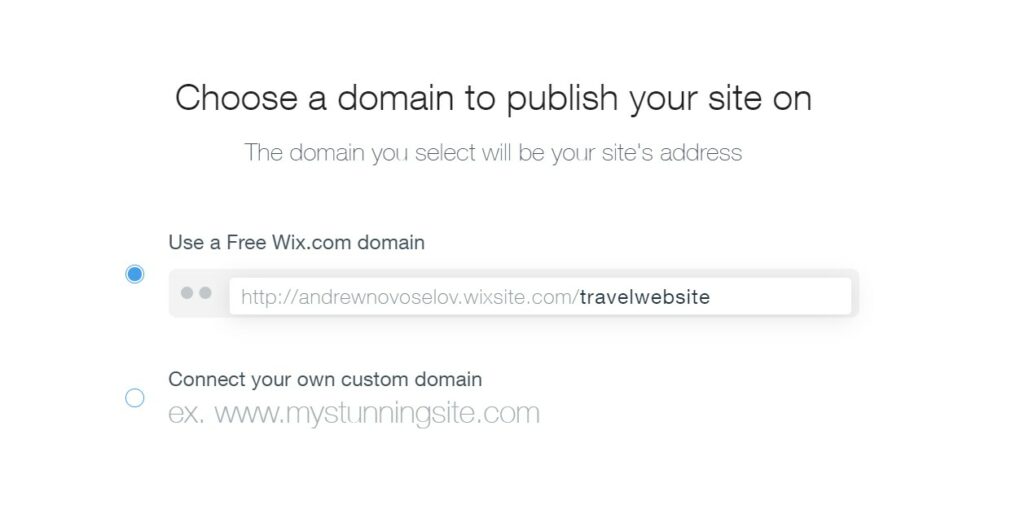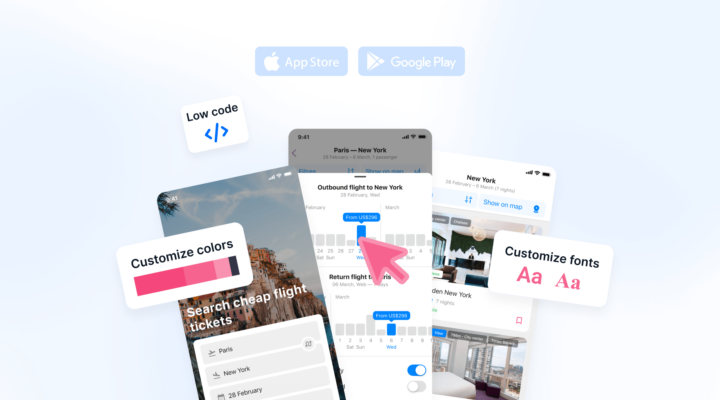What Is an Affiliate Website
To join the world of affiliate marketing, you need to have a dedicated website. It will help introduce advertisers’ products to your audience.
Naturally, there are some requirements for affiliate websites. They should contain high-quality content, regularly drive traffic, be niche-specific and not use some prohibited types of promotion. But, once you have it, the job is easy. Just insert an affiliate link, maybe a couple of widgets and deliver appropriate content every now and then to hold readers’ interest and drive traffic to your advertiser.
We’ve prepared examples of affiliate marketing websites, with their key statistics, traffic sources, content ideas and monetization strategies.
Why Make an Affiliate Website
Affiliate marketing is mutually beneficial for both advertisers and publishers. They make hundreds to thousands of dollars every month. Here are some more reasons why you should build an affiliate website:
- It’s easy to break into. Low costs are a great advantage for wannabe entrepreneurs. All you need to do is build a website, so you can start off regardless of your current financial situation. Even if there is no opportunity for you to make your own website, it is still possible to become an affiliate.
- It doesn’t require your 24/7 presence. You can be an affiliate and still have a full-time job or travel around the world, for example. Set up an affiliate marketing website and generate passive income while still keeping your main job or traveling the world.
- It provides unlimited income potential. The more time and effort you invest, the higher the income, so you will be able to increase revenue.
- It is not risky. In contrast to other financial ventures, you don’t need to jeopardize your capital or agree to hard-to-meet obligations.
The income potential of affiliate marketing depends on the niche.
How to Build an Affiliate Website From Scratch
Ready to become an affiliate? To build a great money-making website, you’ll need to tailor it to a specific advertiser and to choose one, it’s important to pick a niche and research affiliate programs. Only then you can start building a website and preparing content.
Choose a Niche
To become a successful affiliate, it’s important to find a balance between personal interests, skills and market demand. There are so many niches that seem profitable, but making a random choice won’t do good. You need to consider your own preferences so that the business would be interesting for you, and market trends to stay afloat. Below, there are some trendy niche ideas:
- Travel. Today traveling is easier than ever before, but people still look for tips from seasoned nomads to save money and avoid making mistakes. This niche allows advertising many types of products from flight tickets and car rentals to insurance agencies and amusement parks, to name a few. Since it’s better to focus on a narrow topic, consider writing about traveling on a budget, extreme sports, culinary trips and so on. Here are some tips to consider when choosing a niche in the travel market.
- Products. This is another niche for affiliate marketing. Many people make purchases online, so if you write proper reviews on your advertiser’s products, they are likely to generate many leads. The niche is very diverse, and you can promote any type of products from sports equipment to apparel and beauty products, whichever you find trendy and appealing. To make the most of this affiliate niche, try out the service or product yourself to not mislead your audience and lose reputation.
- Health. It has always been a lucrative niche, as everyone cares about their well-being. Evergreen topics include vitamins, products for weight loss, ecological food, and many more. Take into account your audience’s location, age, gender, preferences and other factors. For example, men are more likely to purchase protein for building muscles, while women appreciate skin care vitamins.
- Money. As online businesses become more and more trendy, you can tell people how to make money online: develop writing skills and become a copywriter, launch an online store, start trading and so on. Or, share your affiliate marketing experience and incentivize others to explore this lucrative income source.
- Saas. You can earn a commission by helping new business owners get their websites up and running. There are lots of services that webmasters use that have affiliate programs. For example, YayCommerce offers a WordPress plugin, WooCommerce extensions and custom tools for online stores. You can get 60% of their income by joining the YayCommerce affiliate program and recommending the service to those who need it.
These are just a few suggestions, and naturally, there are more affiliate niche website ideas. After picking a niche, check potential competitors to see how much traffic, keywords they have and whether you’ll be able to fit in.
Find Affiliate Programs
Once your preferences are clear, it’s time to choose an advertiser and join affiliate programs or networks. Programs are tied to an advertiser, while networks allow you to sign up for different campaigns at the same time, as they accumulate many offers in one interface.
One great example of affiliate networks in the travel niche is Travelpayouts. The network provides all kinds of travel products from flight tickets and accommodation to travel insurance and offers customizable promotion tools. Affiliates get up to 70% revenue share. With Travelpayouts, you can join affiliate programs of many travel “giants” such as Booking.com, Hostelworld and Kiwi.com to name a few.
If you plan on diving into another industry, here is a guide to niche-specific affiliate programs.
Choose Domain Name
The domain is your website name, and to attract followers, it should be rather short, catchy and relevant. It includes two parts: the name itself, for example, Google, and a so-called top-level domain, starting with a dot, such as .com, .org, .uk and more. Domains are renewed annually, so you’ll purchase one for at least one year.

Free domains are provided by many website builders, but they are rather long and complicated. For example, if you make a website on Wix, it will have the following name: username.wixsite.com/siteaddress.

But, paid subscriptions on Wix offer a free domain name of your preference, which can save you some money. On top of that, you won’t have to manually connect a new domain name and website.
Apart from website builders, there are domain registrars such as Google Domains or Hover, auctions like GoDaddy or Sedo, and more.
Choose Hosting and Affiliate Website Builder
Today, website builders are easy-to-use, don’t require coding skills and are likely to offer hosting in one package. You can build an affiliate website with WordPress, Wix, Weebly and many more. All these platforms provide free plans with limited server capacity which might be suitable for beginners and premium options for bigger projects.
To choose a platform, consider what features you find most important for your website. For example, Wix is a drag-and-drop kind of editor. You can create any affiliate website design, while other platforms offer less room for creativity.
With Medium or Blogger, you won’t have to worry about hosting, but you’ll fully depend on the platform performance. Website builders and hostings usually offer annual subscriptions, just like domain registrars.
Dozens of free and paid hosting services can be found on the web, but not all of them are able to meet your needs. Consider the following requirements.
Run a blog may cost literally even less than $100 if you do most of the work yourself. However, be prepared to spend a good chunk of money if you want to make a website with the help of professionals. Watch the following video to learn how much it costs to run a blog:
Set Up Your Affiliate Website Theme and Plugins
You can choose a theme on your website builder. Themes and plugins vary according to niche and website types such as e-commerce, personal blog, etc. You can find affiliate website templates with many platforms, here are some examples. WordPress also has affiliate website themes for travel websites.
Apart from a theme, you can also use plugins to optimize your website. WordPress has a range of SEO plugins that will help increase traffic and conversions. Travelpayouts also provides a plugin for WordPress that can be useful for your website.
Write Niche-Specific Content
Once the website is set, you can start uploading content. One of the most important rules of a successful affiliate marketing campaign is to use original and niche-specific texts, images and videos.
To get niche content for free, explore dedicated resources such as Amazines and Article Sphere for articles, Pexels and Pixabay for photos, Pexels Video and Stock Footage 4 Free for video, and many more. If you have good writing skills, why not write articles on your own? In this case, you’ll need a detailed guide and a lot of special tools to automate the process such as plagiarism and grammar checkers. The third way to get niche content for free is by guest blogging. Normally, writers are eager to write for well-known brands, but even if you are just starting off, why not place a “Writers wanted” ad on your blog?
To purchase niche content, you can resort to writing agencies and freelance platforms. Writing agencies like Textbroker and WriterAccess provide access to authors only with a paid subscription and can be more expensive than freelance services, but they also deliver texts on time and guarantee quality. Freelance platforms, such as Upwork and Fiverr charge per hour or post and feature hundreds of writers in every niche. As for multimedia, there are photo banks like Shutterstock or Dreamstime where you can get unique content.
Make SEO Optimization
To make the most of your affiliate website, you’ll need to optimize it for search engines. Here are the key steps:
- Use keywords throughout your posts (title, headings, main body, anchors, meta descriptions, tags)
- Add keyword-rich image descriptions
- Link every article to a few relevant materials on your website
- Add links to authoritative domains in the niche
- Place the most important content one-click away from the home page
- Add subscription forms and build an email list
- Add social media share buttons
Many platforms offer all-in-one solutions, like SEMRush, Majestic SEO, SEOMoz. There are also free tools like Google Keyword Planner, SEO analysis extension for Chrome and more.
Place Backlinks
Backlinks connect your website to the world, and the more of them you have, the more likely you are to be shown on Google search results. However, spammy backlinks that come from low-quality websites can negatively influence your website promotion, while high-quality original content organically brings backlinks, as people like to share useful information. Read our guide to write articles that increase the website traffic and bring backlinks.
It is possible to calculate the average number of backlinks for your niche. Also, to appear on the first pages of Google search results, it is important to overcome competitors, and a proper analysis of their backlinks number can be the first step.
Set up Analytics
To stay on top of your affiliate marketing campaign and make informed decisions on time, set up a few analytics tools. They will allow you to check traffic volume and sources, conversion rates, areas on the blog that are popular and the ones that need improvement. One of the best tools to use is Google Analytics: it is free and provides a comprehensive analysis of your business. If you are new to Google Analytics, start by watching this video.
Apart from checking the website’s overall performance, you’ll also need to keep an eye on affiliate links. Tracking them will help you see what elements give the highest conversion rate and understand your campaign’s pros and cons.
Place Affiliate Tools
Once the website is ready, you can join the affiliate marketing. Some advertisers manually select affiliates, while others approve applications automatically.
You can start by signing up with Travelpayouts. Your account will be instantly approved, apart from a few campaigns that have stricter requirements.
After joining the programs of your preference, it’s time to place affiliate tools. Travelpayouts has a wide range of customizable tools like search forms, links, and white label, that you can tune to your blog design. To top it all off, tools are available in 50 different languages.
Also, consider analyzing cases of other affiliates within your niche or even network. They might bring valuable insights into the right widget placement, content writing, campaign strategy and more. On the Travelpayouts website, you can find many cases examples to learn from.
How to Make an Affiliate Website in a Few Steps
Making an affiliate website today is easier than ever before. You just have to follow a few simple steps and then monitor your blog performance. However, the success of an affiliate marketing campaign depends on many factors: current trends, offer relevance, traffic, widgets.
To take it to the top, it’s great to join affiliate networks such as Travelpayouts. You can sign up for a few offers at once, and test which ones give you the highest conversions and payouts. Also, it is important to study affiliate website examples within your niche to analyze what works best.




